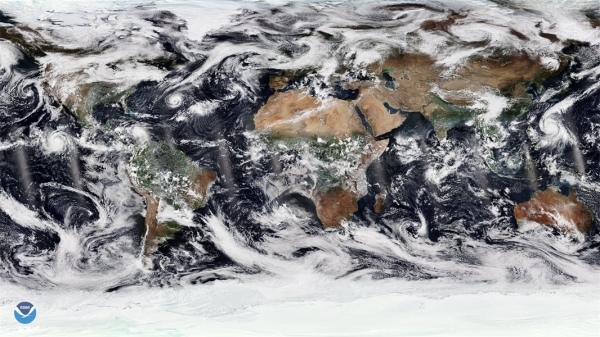A new NOAA study published today in the journal Science Advances about four decades of tropical cyclones reveals the surprising result that reducing particulate air pollution in Europe and North America has contributed to an increase in the number of tropical cyclones in the North Atlantic basin and a decrease in the number of these storms in the Southern Hemisphere. The study also found that the growth of particulate pollution in Asia has contributed to fewer tropical cyclones in the western North Pacific basin.
“Air pollution is a big environmental risk to human health and we have made great strides in reducing health risks by reducing particulate air pollution,” said Hiroyuki Murakami, a physical scientist at NOAA’s Geophysical Fluid Dynamics Laboratory and study author. “But reducing air pollution does not always decrease the risk of hazards from tropical cyclones.”
While a number of recent studies have examined how increasing greenhouse gas emissions are impacting global tropical cyclone activity, Murakami tackles the less studied and highly complex area of how particulate pollution in combination with climate changes is affecting tropical cyclones in different areas of the planet. Murakami reaches these conclusions using the state-of-the-art climate model developed at NOAA GFDL.
Continue reading at NOAA Research
Image via NOAA Research


